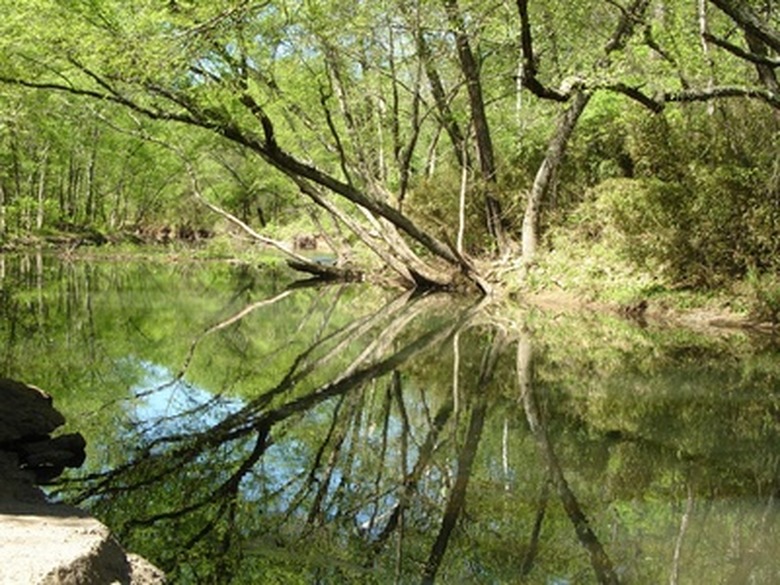Uses For Hedge Apples
Commonly called Osage orange, hedge apples (Maclura pomifera) are large, bright-green fruit with a distinctive bumpy skin texture. Despite their common names, this species is not related to oranges or apples, but are members of the mulberry family. The thorny, deciduous trees on which hedge apples grow are long-lived and shrubby, with 3-to-6-inch-long tapering leaves and pale green flowers. They are grown for their fruit and for the tree itself, which has many uses.
Fruit Uses
The softball-size, yellowish-green fruit of the hedge apple has several uses. Known as a folk remedy for insect infestations, the ripened fruit is placed in basements and around the baseboards of homes plagued by cockroaches and spiders. Studies at Iowa State University have shown that the fruit contains a chemical compound (tetrahydroxystilbene) that is an effective insect repellent, though it is present only in minute quantities.
- Commonly called Osage orange, hedge apples (Maclura pomifera) are large, bright-green fruit with a distinctive bumpy skin texture.
- Known as a folk remedy for insect infestations, the ripened fruit is placed in basements and around the baseboards of homes plagued by cockroaches and spiders.
Though most parts of the fruit are inedible because of its irritating latex-like sap and bitter taste, the seeds are edible if properly harvested. Ornamental use of hedge apples is also popular because of their unusual look and texture. They are a good addition to floral arrangements or wreaths.
Wood Uses
The wood of the hedge apple is exceptionally hard and heavy, with a yellowish hue that turns brown with age. It is subject to relatively little shrinkage compared to other wood, making it a good choice for fence posts and building nailless structures. The tight, swirling grain of the wood is also quite decorative when used for furniture and gunstocks. Native Americans in Oklahoma, Arkansas and Texas prized the wood for use in bows, arrows and clubs because of its strength and durability.
- Though most parts of the fruit are inedible because of its irritating latex-like sap and bitter taste, the seeds are edible if properly harvested.
- The tight, swirling grain of the wood is also quite decorative when used for furniture and gunstocks.
The wood of hedge apple contains a light-orange pigment that can be extracted and used as a dye, though the intense yellow color it produces is short-lived.
Tree Uses
The spreading, shrubby habit of Osage orange has endeared itself to fence-builders for hundreds of years. Commonly used as a hedgerow plant in its native region, hedge apple produces tight, impenetrable barriers that were once described as "horse high, bull strong and hog tight." The dense wood is not affected by termites and rot, unlike traditional fences that require frequent post replacement. Apart from being an excellent livestock barrier, hedge apple is often employed as a windbreak or shelter belt to mitigate wind-borne soil loss.
References
- Iowa State University: Horticulture and Home Pest News: Facts and Myths Associated with "Hedge Apples"
- "Useful Trees and Shrubs"; David S. Marx; 1993.
- "Native American Ethnobotany"; Daniel E. Moerman; 1998.
